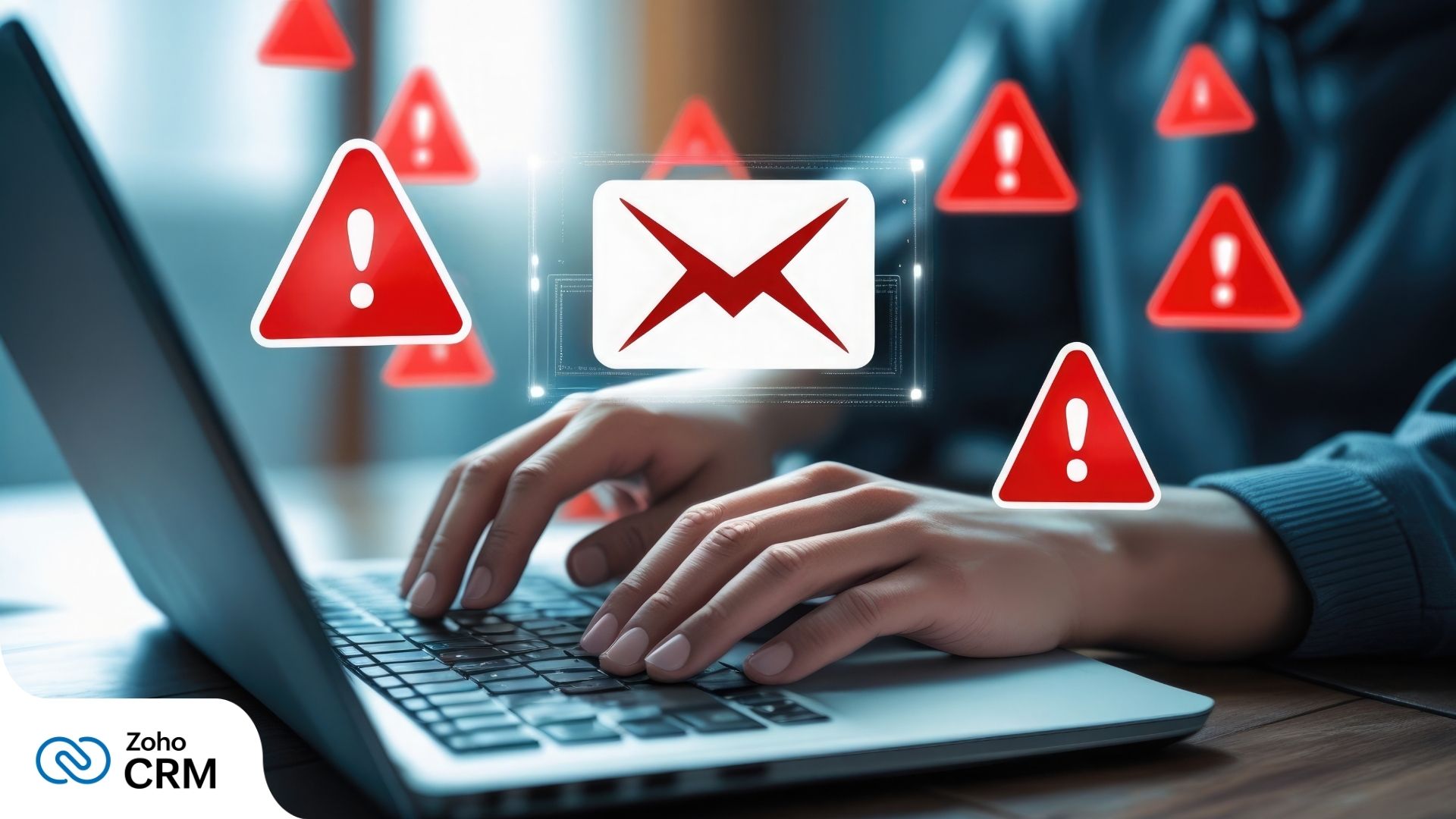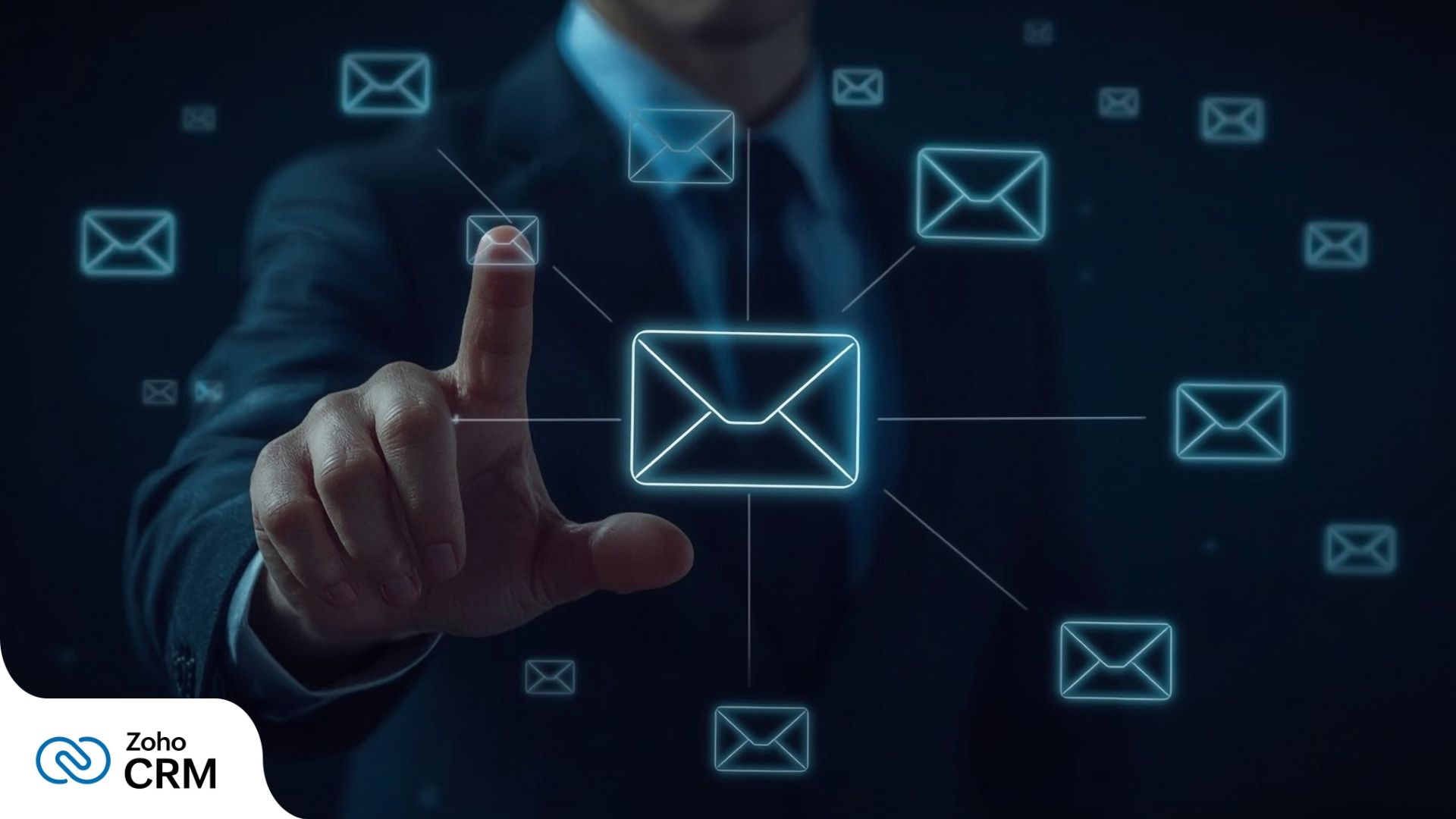How to accelerate sales: A deep dive into lead conversion
- Last Updated : August 7, 2023
- 2.6K Views
- 6 Min Read

Leads are prospective customers that have shown interest in your business. Think of them as seeds which, when nurtured, grow into customers.
But having an astronomically high number of leads isn't exactly desirable, especially if a large chunk of them don't become customers. At the end of the day, you need as many paying customers as you can to stay in business.
Grab your list of leads, and let's start converting them into customers.
A bit about lead conversion
What exactly do we mean by lead conversion? Well, it's just a fancy way of referring to the joint sales and marketing activity of transforming leads into customers—and it's as important as lead generation, wherein your focus is on attracting prospects.
The lead conversion process involves various stages that your lead goes through before you finalize a deal. The role of the salesperson is to nurture the lead and successfully see them through this process.
Converting leads is not a complex process; it's all about nurturing, providing a personalised experience, and showcasing the value you offer well enough that eventually the lead will want to make a purchase. Let's look at some of the ways you can improve your own process and make more customers.
Where does the lead conversion process start?
Well, some might say that it starts from the lead generation stage, as acquiring high-quality leads can boost your conversion rate. Some argue that it begins after the lead is captured—which is when you can then pursue the lead and nurture them.
For the sake of simplicity, let's consider that the lead conversion process starts once the lead is acquired.
Best practices to follow before establishing contact with the lead
Sort your leads right
Large volumes of leads can be pretty challenging to handle. It's widely known that not all leads end up becoming customers, and that some are more likely to convert than others.
Assigning a score that indicates the likelihood of the lead converting makes segmenting them much easier. Every business can calculate this score differently.
Identifying and targeting leads with a high score enables you to draft a unique plan tailored for them, which saves a lot of time and effort for your salespeople, as their energy and resources aren't being wasted on low-reward opportunities.
Waste no more time pursuing cold leads.
Know your leads well
Get to know your leads very well. This includes the industries they belong to, their interests, requirements, pain points, and more. Having gathered this information, you're now equipped to personalize your pitches to your leads. According to a global marketing and market research firm, almost 80% of customers are more likely to make a purchase when the brand offers them a personalized experience. Businesses that understand this will stand out from the rest.
Knowing that you've made the effort to learn about them will make your leads feel special. It positions your company as one that really cares about its customers—which breeds trust.
Prepare relevant content
Keeping your leads informed throughout their journey is important, and this kind of information is universally dispersed as some form of consumable content. High-quality gated content, like blogs, articles, videos, and ebooks, are great ways to keep your leads informed.
Because every stage of the conversion process must contain content, that content must cover a wide range of topics, and each piece should aim at delivering meaningful and helpful information that pushes the lead on to the next stage.
Finalize your plan
After having done all the groundwork, you must map out a specific, well-defined action plan that suits each particular lead. Having a plan eliminates a lot of doubts and saves time.
The plan can include considerations like when to contact the lead for the first time, how often to follow up, what content to share and when to share it, and much more. Maintaining a workflow ensures that you take all the necessary actions.
Now is the time to engage with your leads. You've done your homework and are ready to impress your leads.
Let's now look at some practices to follow after you reach out to your leads.
Never make a lead wait
Leads don't like to wait. In today's fast-paced world with 10-minute grocery delivery, speed is everything. The saying, "the early bird gets the worm" has never been more relevant.
It's said that leads expect a response within 10 minutes. A lead's interest in your business reduces exponentially by the hour. Hence, it's imperative to act on your feet.
Strike when the iron is hot. Even a simple follow-up email goes a long way.
Engage with your leads
It's advisable to engage with a lead through all the stages of the conversion process. The act of reaching out to the lead itself results in increased trust in your company. You can do so across multiple channels.
Be open to having a dialogue with the lead. Answer any questions they might have. Clear up their doubts about your business. Being available to your leads elevates their trust and makes them more likely to turn into customers.
Live chat to the rescue
Having a live chat feature embedded in your website boosts your chances of engaging with a lead. Furthermore, leads can get their queries addressed instantaneously, and your agents can build rapport with them.
Simpler queries can be addressed with an FAQ section, thereby enabling your agents to focus on more pressing support requirements.
Live chat also boosts your conversion rate by 40%, acting as both a support feature and a sales channel.
Take it up a notch with automation. Chatbots can provide support if no agents are available. They can give automated responses to certain queries and even share links to articles in your knowledge base. Chatbots can bring down your customer service costs by 30% and save time by taking care of more routine questions.
Always follow up
Engaging with a lead doesn't end with the first conversation; it's a continuous process that must be done diligently. Regular follow-ups are undeniably the best way to keep a lead engaged.
Follow-ups can take any form, but they have to be personalized and persistent. You can convert almost 80% of your leads if you follow up more than five times. So don't lose hope if the lead doesn't respond in the way you'd like them to. Use a CRM to help remind you to follow up on a particular lead, and across multiple channels.
Leverage artificial intelligence
Artificial intelligence (AI) has come a long way over the past decade—from very poorly identifying a dog in an image to writing heart-wrenching poetry, AI is only getting better.
Harness the powers of AI to help boost your lead conversion rate. Having an AI-powered assistant can help you in countless ways, such as:
Finding information about a particular lead
Telling you the best time to contact a lead
Helping you personalize content
Making sales predictions, and much more
Know which stages your leads are in
As mentioned above, there are multiple stages in a lead's journey toward becoming a customer. As a salesperson, you need to have an idea of the stage your lead is in at any given moment.
Not just sales, but both marketing and the support team as well, must have access to this information. Always remember that collaboration is key when it comes to offering the lead a memorable experience. This is another area where a good CRM can really shine: It enables teams across your organization to access the same data. According to their progress along their journeys, you can send leads targeted content that will gently nudge them into the next stage.
Lead nurturing made easy
With good nurturing comes a good number of customers. Let the lead know that they're being pursued. Invite them to trade shows, webinars, and other events where you showcase your products.
Webinars may seem old-school, but for most B2B businesses, it's still an effective form of marketing. If a lead is really interested in your business, a webinar addressing some of their problems and showcasing how your product may help can really accelerate the pace of conversion.
Webinars can also help generate good leads, making them doubly effective.
Use your socials wisely
Your website need not be your only marketing tool. Social media can prove to be a powerful marketing tool if it suits your business. Having a strong social media presence strengthens your brand and creates awareness, and enables you to build better relationships with your leads. And since they could be on any social media platform, you must be ready to cater to their needs on any or all of them.
Given the heavy competition in the social media space, you should position your company sensibly. You don't want to scream about how your business is the best, but instead put forward why your company can help the lead solve their problems in an innovative fashion.
Get help from the numbers
Analytics are an integral part of the sales process. They tell you everything you need to know about your business, from the performance of your sales teams to the behavior of your customers.
Track rep performance
Your sales reps are the ones that communicate with leads. See which reps have excellent sales records and direct more high-priority leads to them.
Track and record your reps' phone calls to understand customers better. You can even employ AI to go through call transcripts and come up with ways to communicate with the lead.
Perform A/B testing
A/B testing is a powerful marketing strategy that focuses on agility. Say you have two different sets of content and you want to determine which one is more effective at driving engagement. You put the first one to the test and await responses. If you see that it fails to generate the level of engagement you want, you can always go with the second option and see how it performs—and then compare them.
Find a CRM
If you're a salesperson and you're still reading this, congratulations—you have a great attention span. In all seriousness, though, you must have come across some of the things shared in this article before, and you probably employ most of these techniques in your everyday work. Following these tactics will definitely impact your conversion rate positively; but it must be noted that most of these tactics require some manual effort, which might hinder your productivity.
For that reason, we recommend adopting a CRM system and letting it handle menial tasks while you focus on what's important: nurturing your leads and establishing great relationships. Start converting more leads now.


